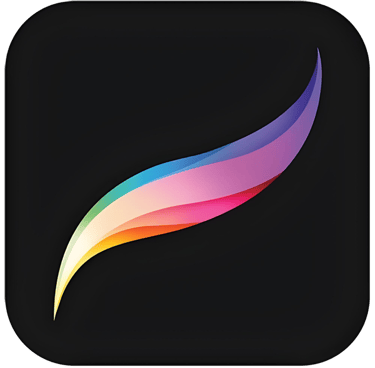Mastering Custom Sock Design: From Concept to Production
Learn the essentials of designing and producing custom socks with this in-depth guide. From understanding sock types and materials to evaluating production methods, budgeting, and finalizing designs, this article provides data-backed insights to help you launch high-quality, market-ready custom socks with confidence.
Jessica
5/15/20253 min read


Understanding the Basics of Sock Design
Designing custom socks begins with understanding the foundational elements: sock styles, materials, and design principles. The global sock market, valued at USD 45.2 billion in 2022, is projected to grow at a CAGR of 6.1% from 2023 to 2030 (source: Grand View Research). This growth is driven by demand for fashion-forward, functional socks—especially in the custom and athletic categories.
Common Sock Types
Crew socks dominate the casual and athletic market, making up over 40% of sock sales globally.
Ankle socks are highly favored in warmer regions and among runners.
Knee-high socks, though niche, are widely used in school uniforms, sports, and fashion-forward collections.
Material Insights
Cotton remains the most commonly used fiber, accounting for over 60% of sock material globally due to its softness and breathability.
Polyester and nylon, valued for moisture control and elasticity, are popular in performance socks. A 2021 study by Textile Outlook International found that polyester-blend socks increased user satisfaction in sportswear by 20%.
Wool, especially merino wool, is a premium material known for temperature regulation. Though costly, it has seen 20% YoY growth in cold-weather outdoor gear sectors (source: IBISWorld).
Design Considerations
Understanding consumer preferences is vital. According to a 2024 survey by FashionUnited:
63% of Gen Z buyers prefer socks with bold colors or graphic patterns.
72% of custom sock brands reported that color trends (e.g., Pantone Color of the Year) influenced their sales.
Using color psychology and seasonal trends can drive appeal. For instance, blues are often associated with trust and stability, which can be effective in corporate or healthcare-themed socks.
Evaluating Production Capabilities
Production choices directly affect cost, design freedom, and scalability.
Knitting
Most custom socks are made using circular knitting machines, which can achieve up to 200 needle counts, allowing detailed designs and smooth finishes.
Machines like the Lonati G615 or Santoni SM8-TOP2 are industry standards and can produce 300–500 pairs per day per machine.
However, these machines require minimum order quantities (MOQs), usually starting at 300–500 pairs, to justify setup costs and maximize efficiency.
Printing (Sublimation)
Sublimation printing offers full-color, edge-to-edge designs and is popular for polyester-based socks.
It's ideal for short runs or promotional orders, with MOQs as low as 50–100 pairs.
However, it may be limited in fabric choices and less breathable than knitted alternatives.
According to Printful, one of the largest print-on-demand suppliers, sublimated socks grew by 27% in popularity among e-commerce stores between 2021 and 2023.
Key Considerations
When evaluating production:
Lead times typically range from 7 to 30 days, depending on complexity and volume.
Consider labor availability and geographic location. For example, manufacturers in China or Turkey may offer lower costs, but longer shipping times.
Budgeting for Custom Sock Production
A successful sock project depends on aligning creative vision with financial planning.
Cost Factors
Materials:
Cotton: ~$0.15–$0.30/pair
Polyester blends: ~$0.10–$0.25/pair
Merino wool or bamboo: ~$0.40–$0.80/pair
Manufacturing method:
Knitting: $1.00–$2.50/pair (higher for jacquard or seamless)
Sublimation: $2.50–$3.50/pair for low-volume runs
Design complexity: Socks with over 6 colors or custom jacquard logos can cost 15–30% more due to additional programming and threading time.
Cost-Saving Tips
Bulk production can reduce per-unit costs by 30–50%.
Offshore manufacturing (e.g., China, Pakistan, or Turkey) can cut costs by up to 40%, though with trade-offs in lead time.
Multi-supplier quotes: A 2023 case study by Maker’s Row showed that getting quotes from 3+ manufacturers saved startups an average of 18% on first runs.
Finalizing Your Design for Production
Design File Specifications
Always provide artwork in vector format (AI, EPS) or 300 DPI raster images (PNG, PSD).
Sock templates vary by manufacturer. Using the correct mockup ensures design alignment—misalignment errors are among the top 3 causes of production delays.
Sampling & Quality Control
Samples cost between $20–$60, but can save thousands by preventing flawed mass production.
Check for:
Color fidelity (on-screen vs. fabric)
Design accuracy
Stitching and seam quality
Sizing and fit
A 2022 Alibaba survey found that 92% of successful private-label sock brands ordered samples before mass production.
Timeline Management
Production schedule:
Design confirmation: 1–2 days
Sampling: 5–10 days
Bulk production: 10–25 days
Build in buffer time for revisions, especially during peak seasons (Q4 holidays, trade shows, etc.). Designing custom socks is a creative and strategic endeavor. By understanding sock types, materials, production methods, and cost structures—and by supporting decisions with data and samples—you significantly improve the odds of a successful product launch. Whether you're building a brand or running a limited-edition campaign, grounding your process in data-backed decisions sets you apart in a growing global market.
Partners
Supporting creators with quality production and delivery.
Collaboration
About Us
Copyright © 2025 Raoin Co. All rights reserved.







